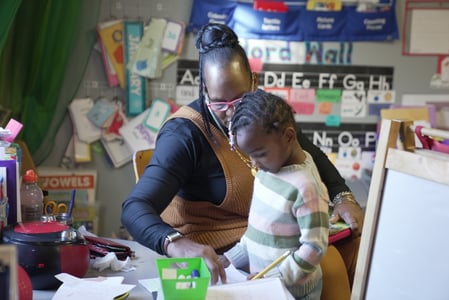
Recently, I attended a training with coaches and educators from across the country, all with one goal in mind: how can I increase the quality of Instructional Support in my center? As the group discussed the merits of encouraging children to use complex language, we landed a tried-and-true teaching strategy outlined by the CLASS® tool: asking children open-ended questions to stimulate their language use.
As the group brainstormed open-ended questions they might ask during different lessons and settings, I couldn’t help but notice one educator squirm in her seat, looking frustrated. The educator raised her hand and asked, “But what happens when I ask a child an open-ended question and they just shrug their shoulders?”
The group paused and collectively nodded, relating to this common issue. What happened next seemed like something of a taboo in the world of CLASS, where open-ended questions are so highly valued: we discussed the merits of closed-ended questions.
We all agreed that one goal of Language Modeling is to stimulate children’s use of language; open-ended questions are used to accomplish that goal and often do a great job of getting children to do more talking. But sometimes, it’s hard for children to put complex thoughts into words, and closed-ended questions can serve as a good “warm-up” for expressing bigger ideas or a good way to scaffold a child’s thinking around a complex question.
Consider this example:
Educator: Why do you think the ball floats and the sponge sinks?
Child: I don’t know.
Educator: Are the sponge and the ball the same?
Child: No.
Educator: Okay, well if they’re not the same, that means that are … what?
Child: Not the same?
Educator: Right, not the same, or different. What do you think is different about them?
Child: The ball is hard and the sponge is soft.
Educator: Hmm, so I wonder that has something to do with why the ball floats and the sponge sinks. What could we do to find out?
In this example, the educator uses a couple of closed-ended questions to get the child to do some thinking about the topic before he is ready to consider the more open-ended question about why some materials float and others sink.
Don’t get me wrong, I’m all about asking both children and adults open-ended questions—it shows a deeper interest in their perspectives, gets them to do more talking, and keeps the conversation flowing. However, I also believe that there is a time and a place for closed-ended questions, particularly as a means to get a more challenging conversation started.
What do you think? Are you sometimes met with a blank stare when you ask a young child an open-ended question? What kinds of strategies do you use to get them talking?

